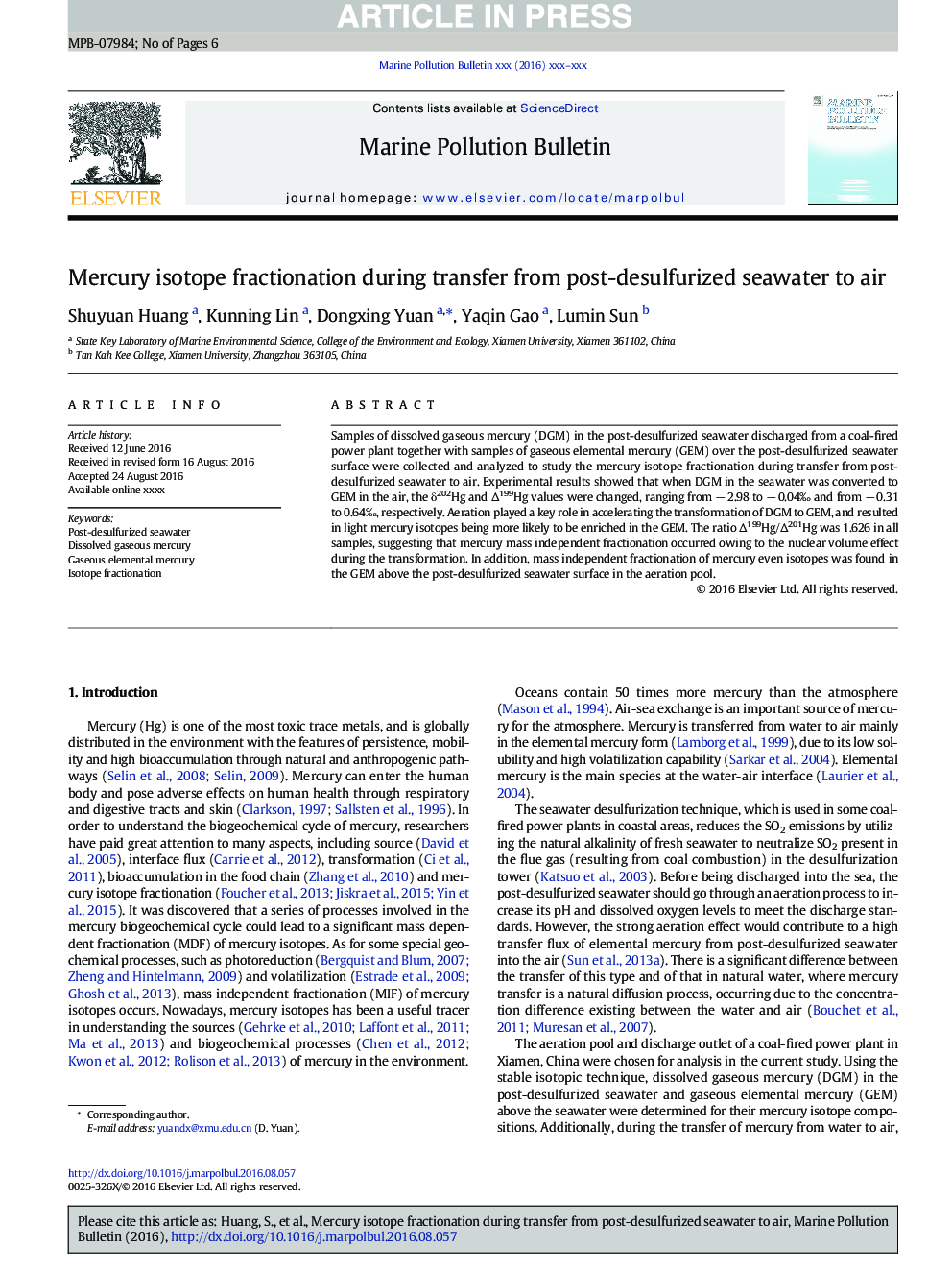| Article ID | Journal | Published Year | Pages | File Type |
|---|---|---|---|---|
| 5757846 | Marine Pollution Bulletin | 2016 | 6 Pages |
Abstract
Samples of dissolved gaseous mercury (DGM) in the post-desulfurized seawater discharged from a coal-fired power plant together with samples of gaseous elemental mercury (GEM) over the post-desulfurized seawater surface were collected and analyzed to study the mercury isotope fractionation during transfer from post-desulfurized seawater to air. Experimental results showed that when DGM in the seawater was converted to GEM in the air, the δ202Hg and Î199Hg values were changed, ranging from â 2.98 to â 0.04â° and from â 0.31 to 0.64â°, respectively. Aeration played a key role in accelerating the transformation of DGM to GEM, and resulted in light mercury isotopes being more likely to be enriched in the GEM. The ratio Î199Hg/Î201Hg was 1.626 in all samples, suggesting that mercury mass independent fractionation occurred owing to the nuclear volume effect during the transformation. In addition, mass independent fractionation of mercury even isotopes was found in the GEM above the post-desulfurized seawater surface in the aeration pool.
Related Topics
Physical Sciences and Engineering
Earth and Planetary Sciences
Oceanography
Authors
Shuyuan Huang, Kunning Lin, Dongxing Yuan, Yaqin Gao, Lumin Sun,
